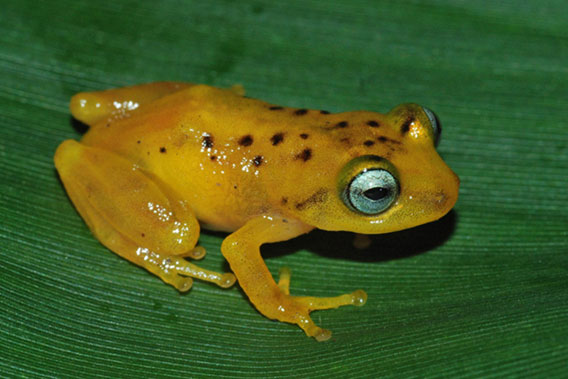
New frog, Raorchestes manohari was dubbed ‘beautiful’ by its discoverers. Photo courtesy of D.P. Kinesh.
Ten new species of frog have been discovered in India’s Western Ghats according to two new papers in Biosystematica. Although human populations have farmed in the Western Ghats for centuries, the new discoveries prove that the rainforest still holds many surprises. The Western Ghats lie along India’s west coast and have been dubbed one of the world’s biodiversity hotspots, but the rich wildlife is imperiled by rising human impacts.
Nine of the new species belong to the genus Raorchestes, a genus only found in the Western Ghats, which now includes 39 total species. The tenth species belongs to the Polypedates genus, which was discovered near tea plantations.
One of the new Raorchestes frogs—Raorchestes manohari—was described in the paper in particularly effusive terms: “[This is] one of the most beautiful species
with no resemblance to any of the described species
of Raorchestes genus.
The ten new frogs were found during 20 self-funded expeditions over the past few years.
“None of the expeditions are funded [by outside groups], all the expeditions were undertaking just by interest by the team members,” K.P. Dinesh, one of the researchers, told mongabay.com. IN his six years as a researcher, Dinesh has discovered six new amphibians.
According to Dinesh there are now 167 species of amphibian known from the Western Ghats alone. Astoundingly, 86 percent (145 species) are found only in the Ghats.
Worldwide, amphibians are undergoing an extinction crisis currently unparalleled in the animal world. The IUCN Red List estimates that 41 percent of the world’s amphibians are threatened with extinction. Frogs, salamanders, and worm-like caecilians have been battered worldwide by habitat loss, pollution, agricultural chemicals, overexploitation, and climate change, however the biggest impact on amphibians appears to be a fungal disease called chytridiomycosis. This amphibian-plague has wiped out whole species even in otherwise pristine areas. Experts say that in the past 3 decades it is likely at least 120 amphibians have gone extinct. In a few cases captive populations in zoos have become a species’ last stand.
The new frogs—like much of the biodiversity in the Western Ghats—are imperiled by habitat loss, says Dinesh. Growing human populations, rising consumption, and intensive agriculture taking the place of traditional farming in parts of the Western Ghats, has put many species in danger.
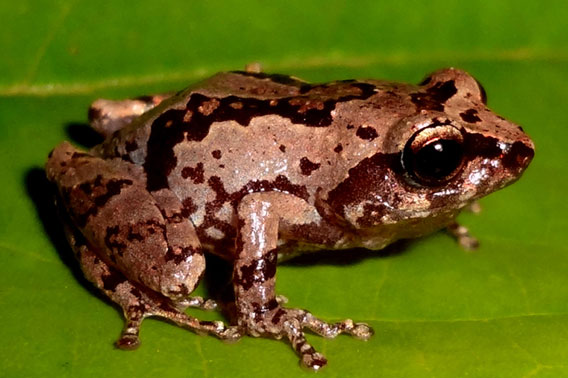
Raorchestes agasthyaensis. Photo courtesy of D.P. Kinesh.
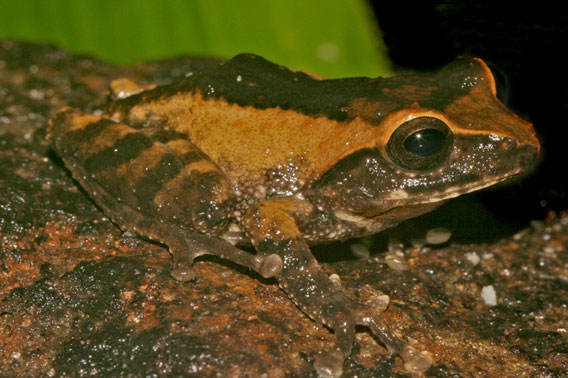
Raorchestes johnceei. Photo courtesy of D.P. Kinesh.
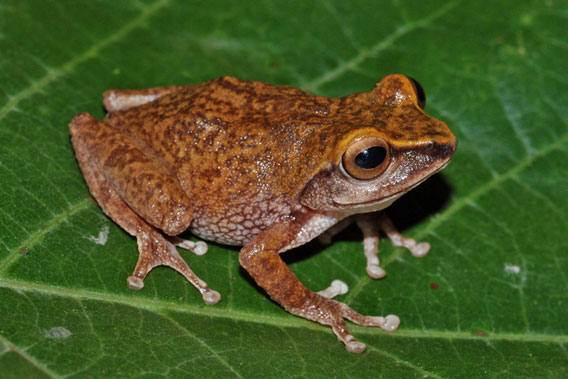
Raorchestes theuerkaufi. Photo courtesy of D.P. Kinesh.
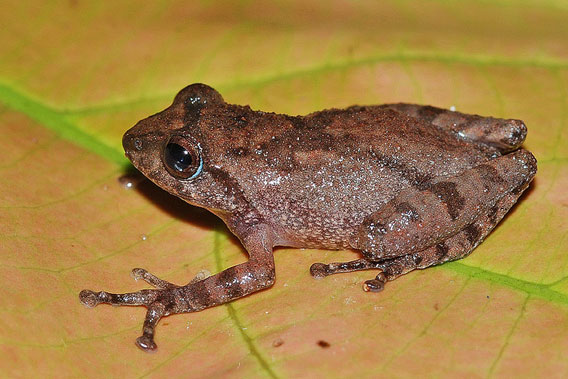
Raorchestes ravii. Photo courtesy of D.P. Kinesh.
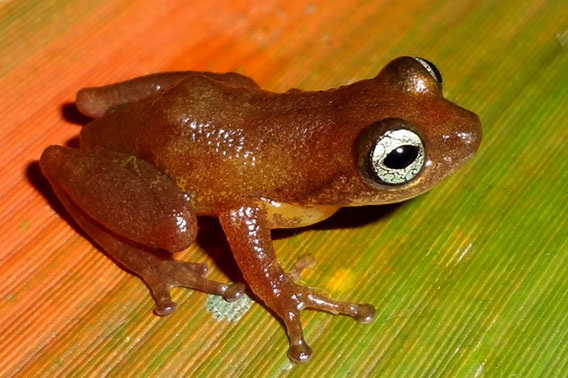
Raorchestes uthamani lives in reeds. Photo courtesy of D.P. Kinesh.
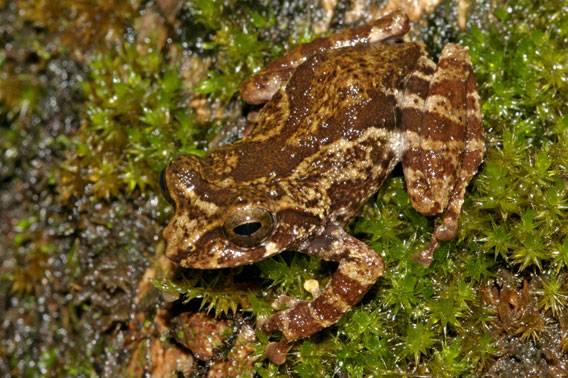
Raorchestes crustai is notable as a canopy frog that makes its home on tree bark. Photo courtesy of D.P. Kinesh.
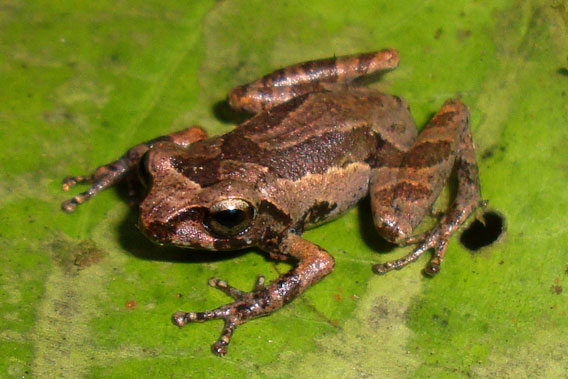
Raorchestes kadalarensis. Photo courtesy of D.P. Kinesh.
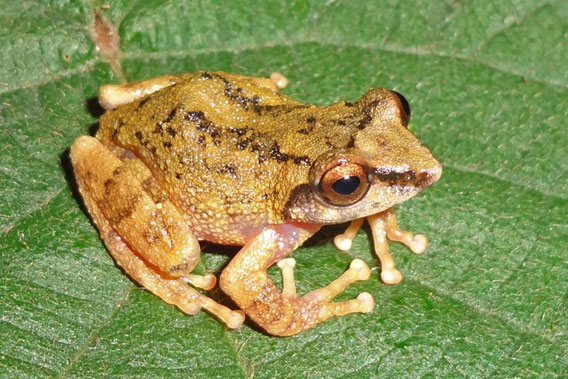
Raorchestes thodai. Photo courtesy of D.P. Kinesh.
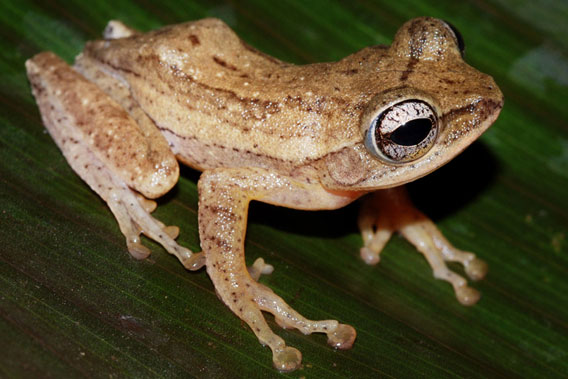
Polypedates bijui is a very rare and seasonal frog. Photo courtesy of D.P. Kinesh.
Related articles
Balancing agriculture and rainforest biodiversity in India’s Western Ghats
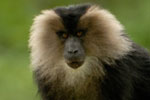
(08/08/2011) When one thinks of the world’s great rainforests the Amazon, Congo, and the tropical forests of Southeast Asia and Indonesia usually come to mind. Rarely does India—home to over a billion people—make an appearance. But along India’s west coast lies one of the world’s great tropical forests and biodiversity hotspots, the Western Ghats. However it’s not just the explosion of life one finds in the Western Ghats that make it notable, it’s also the forest’s long—and ongoing—relationship to humans, lots of humans. Unlike many of the world’s other great rainforests, the Western Ghats has long been a region of agriculture. This is one place in the world where elephants walk through tea fields and tigers migrate across betel nut plantations. While wildlife has survived alongside humans for centuries in the region, continuing development, population growth and intensification of agriculture are putting increased pressure on this always-precarious relationship. In a recent paper in Biological Conservation, four researchers examine how well agricultural landscapes support biodiversity conservation in one of India’s most species-rich landscapes.
First ever picture of long lost rainbow toad
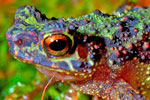
(07/13/2011) Scientists are elated after the surprise rediscovery of a wildly-colored frog not seen for 87 years and never before photographed—until now. The Bornean rainbow toad, also known as the Sambas Stream toad (Ansonia latidisca) was rediscovered on Borneo in the Malaysian state of Sarawak by local scientists inspired by a 2010 search for the world’s missing amphibians by Conservation International (CI). Leading up to its search CI released the World’s Top 10 Most Wanted Lost Frogs (out of a hundred being searched for): the Bornean rainbow toad was listed as number 10.
Worldwide search for ‘lost frogs’ ends with 4% success, but some surprises
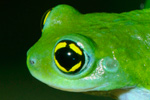
(02/16/2011) Last August, a group of conservation agencies launched the Search for Lost Frogs, which employed 126 researchers to scour 21 countries for 100 amphibian species, some of which have not been seen for decades. After five months, expeditions found 4 amphibians out of the 100 targets, highlighting the likelihood that most of the remaining species are in fact extinct; however the global expedition also uncovered some happy surprises. Amphibians have been devastated over the last few decades; highly sensitive to environmental impacts, species have been hard hit by deforestation, habitat loss, pollution, agricultural chemicals, overexploitation for food, climate change, and a devastating fungal disease, chytridiomycosis. Researchers say that in the past 30 years, its likely 120 amphibians have been lost forever.